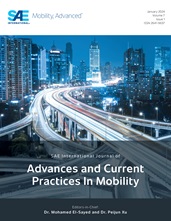As passenger cars are progressively moving towards more electrification, Plug-in Hybrid Electric Vehicles (PHEVs) may play a greater role. Several questions arise regarding their performance in real-world conditions, their optimal configuration - in terms of battery capacity, fuel and powertrain used - and their pollutant emissions. In this context, two PHEVs complying with Euro 6d standards were evaluated on a chassis-dyno and on-road using the same road profile, complying with RDE requirements. The two vehicles differ only by their powertrain, one being diesel-fueled, and the other being gasoline-fueled. The vehicles were tested under various conditions, including charge depleting and charge sustaining modes (i.e., tests respectively starting with a fully charged battery and a discharged battery), with various fuel compositions including traditional fossil-based fuels, 100% renewable Hydrotreated Vegetable Oil (HVO) and 100% renewable gasoline, blended with 20% v/v ethanol (E20). The vehicle weight was also artificially varied on the chassis-dyno to assess the difference of performance between a PHEV and a Hybrid Electric Vehicle (HEV), having a lower-capacity battery. The set of measurements included fuel and electricity consumptions, CO2 and regulated pollutant emissions (NOx, CO, HC, PN23, PM) as well as non-regulated pollutant emissions such as PN10, CH4, NH3 and N2O. The results show that the two vehicles have regulated pollutant emissions levels well below the Euro 6d limits under all testing conditions, and unregulated pollutant emissions in the range of Euro 7 proposals. For the PHEVs and operating conditions tested, switching from a traditional fossil-based fuel to a 100% renewable fuel, for both gasoline and Diesel powertrains, does not have statistical significant impact on the pollutant emissions. Regarding fuel and powertrain aspects, it is observed that switching from a gasoline- to a Diesel-PHEV enables a reduction of CO2 emissions whilst also lowering pollutant emissions except for NH3 and N2O. However, on-road tests results show significantly higher fuel consumption than chassis-dyno tests, although being driven on the same test-cycle.
